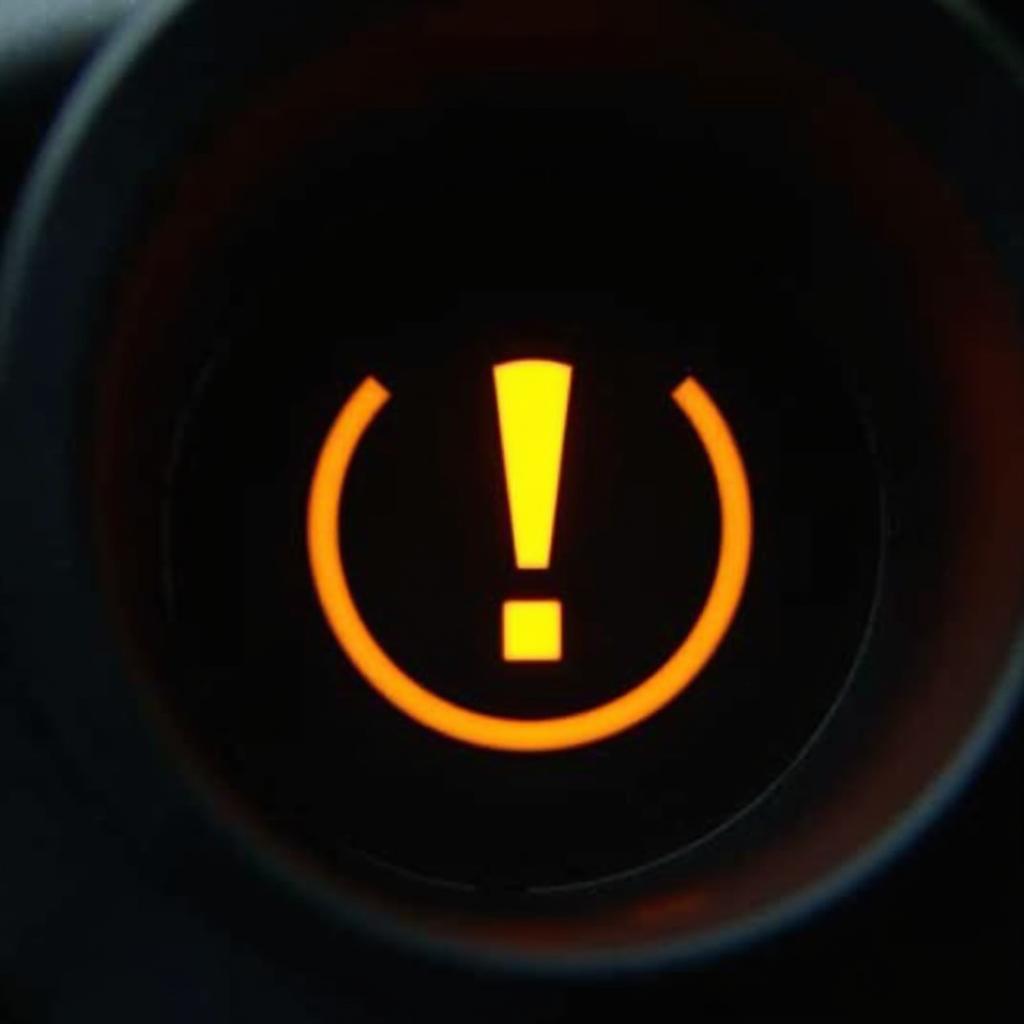Have you ever seen the yellow tire pressure warning symbol light up in your Mitsubishi? It’s a common annoyance that many drivers experience. But don’t worry, resetting the Tire Pressure Monitoring System (TPMS) in your Mitsubishi is easier than you might think. In this article, we’ll show you step-by-step how to reset your Mitsubishi’s TPMS and give you valuable tips related to tire pressure.
What is the Tire Pressure Monitoring System (TPMS)?
The Tire Pressure Monitoring System (TPMS) is a safety feature found in modern vehicles. It constantly monitors the air pressure in your tires and warns you as soon as the pressure in one or more tires is too low.
 Mitsubishi TPMS warning light on dashboard
Mitsubishi TPMS warning light on dashboard
Why is Proper Tire Pressure So Important?
The correct tire pressure is crucial for your safety and the optimal performance of your Mitsubishi. Too low tire pressure can lead to the following problems:
- Increased Fuel Consumption: Low tire pressure increases rolling resistance, forcing your engine to work harder.
- Extended Braking Distances: The braking distance increases because the tires have less grip on the road.
- Poorer Handling: Your Mitsubishi becomes less responsive to steering inputs and handles poorly.
- Increased Tire Wear: Tires with low pressure wear out faster at the edges.
- Increased Risk of Tire Damage: In the worst case, low tire pressure can lead to a tire blowout.
How the Mitsubishi TPMS Works
There are two types of tire pressure monitoring systems: direct and indirect. Mitsubishi typically uses a direct system, where each tire is equipped with a sensor that measures the pressure and sends the data to the control unit.
Resetting Your Mitsubishi TPMS – Step-by-Step Guide:
After you have corrected the tire pressure in your Mitsubishi using a tire pressure gauge, you need to reset the TPMS. The procedure may vary slightly depending on the model, but generally, the steps are similar:
- Turn the ignition on.
- Look for the “Tire Pressure” or “TPMS” option in the on-board computer menu.
- Select the “Reset” or “Initialize” option.
- Confirm the process.
Sometimes you may need to drive a short distance until the system recognizes the new tire pressure and the warning symbol turns off.
Frequently Asked Questions About Mitsubishi TPMS:
How often should I check my Mitsubishi’s tire pressure?
It is recommended to check your tire pressure once a month and before every long trip.
Where can I find the recommended tire pressure for my Mitsubishi?
You can usually find the recommended tire pressure in your vehicle’s owner’s manual, on a sticker in the driver’s side door frame, or on the inside of the fuel filler door.
What should I do if the TPMS symbol remains illuminated after resetting?
If the TPMS symbol remains illuminated after resetting, it could indicate a defective sensor, a low sensor battery, or a problem with the TPMS control unit. In this case, you should visit a workshop.
Conclusion
Your Mitsubishi’s Tire Pressure Monitoring System is an important safety feature that helps you prevent tire failures and extend the life of your tires. By regularly checking and correctly resetting the system, you can ensure that your Mitsubishi is always driving with optimal tire pressure.
If you have any questions about tire pressure or resetting the TPMS on your Mitsubishi, our automotive experts are happy to assist you with advice and support. Simply contact us via our website – we are happy to help!
